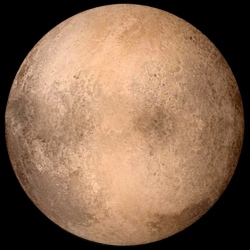
It’s unusual that university archives produce scientific discoveries. But a 1917 astronomical glass plate from the Cargenie Observatory is offering the oldest evidence for a planet orbiting another star, besting the first confirmed exoplanet detection by more than 70 years.
It all started about a year ago, when Jay Farihi of the University College London contacted the Carnegie Observatory about a glass plate containing a spectrum of van Maanen’s star, a white dwarf photographed by renowned astronomer Walter Adams in 1917. Farihi was interested in studying the star’s spectrum for a review article about planetary systems around white dwarfs. He did not expect to find evidence for one.
Today, astronomers use digital tools to capture starlight, separate it into its component colors, and decode the star’s chemistry. But in 19th and early 20th century if you wanted to learn about a star’s makeup, photographic glass plates were the only game in town. When Farihi analysed this particular plate, he discovered something striking: an absorption line, indicating a missing slice of the spectrum where the star’s light had passed through an object and been partially absorbed.
The line revealed the presence of heavy elements, including calcium, magnesium, and iron in the vicinity of the star. Today, white dwarfs bearing this sort of “pollution signature” are considered strong candidates for rocky planetary systems.
“The unexpected realisation that this 1917 plate from our archive contains the earliest recorded evidence of a polluted white dwarf system is just incredible,” Carnegie Observatory director John Mulchaey said in a statement. “And the fact that it was made by such a prominent astronomer in our history as Walter Adams enhances the excitement.”
It’s not the first time in recent months that astronomers have learned something amazing from one of these ageing snapshots of the sky. Earlier this year, Louisiana State University’s Bradley Schaefer examined photographic plates of a rather infamous stellar body, KIC 8462852, better known as the supposed alien megastructure, and discovered even more evidence that the star’s light curve is damn weird. Clearly, between hints of exoplanets and hints of Dyson spheres, it’s high time we gave the work of our pioneering astronomers a thorough review.
